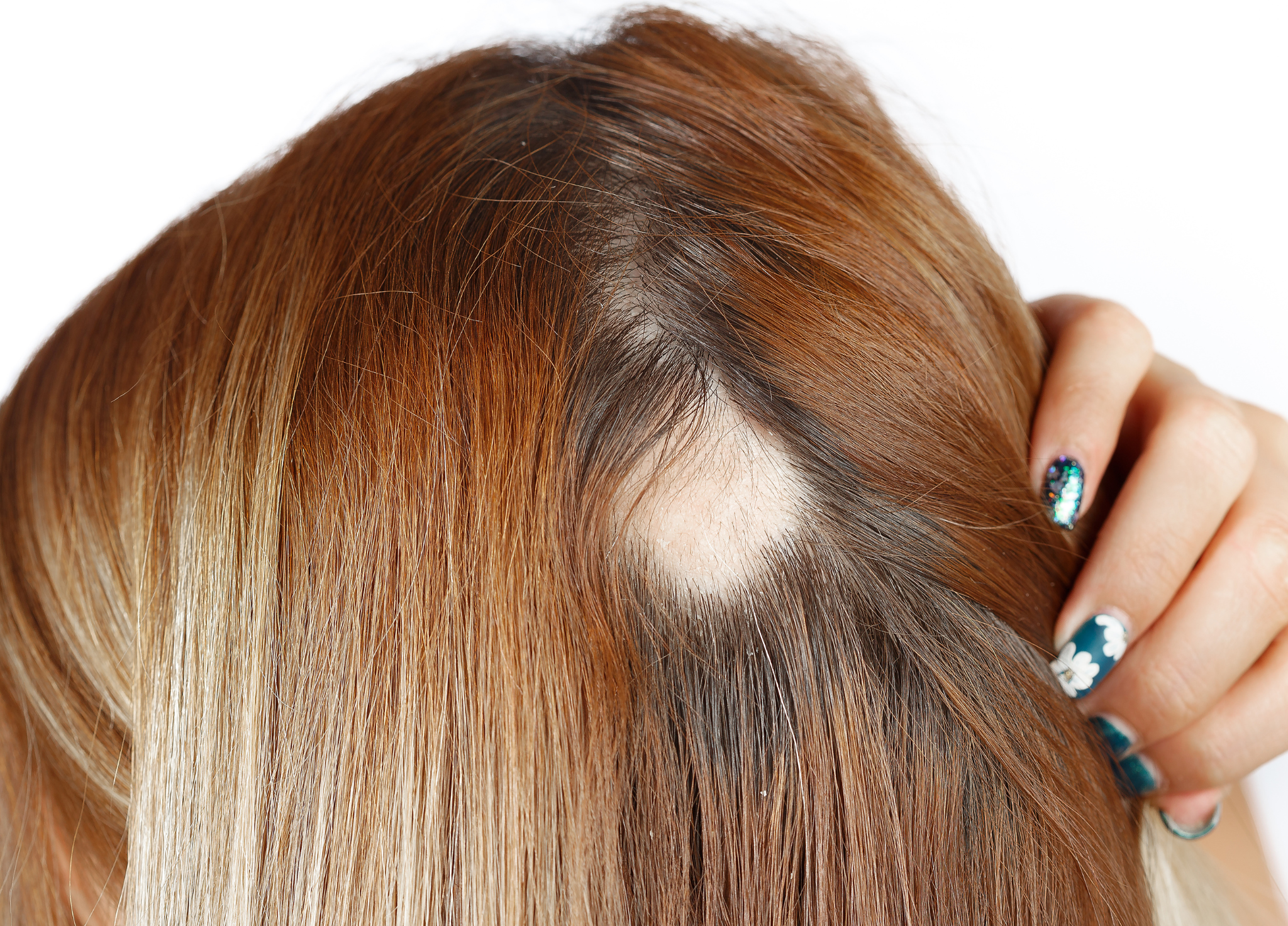Category
Alopecia areata is an autoimmune disorder that causes hair loss in distinct, often unpredictable patterns.

Have any questions?
If you have any questions, feel free to contact us at [email protected]. A member of our support team will help you shortly.
Share this blog
Fatigue
Energy
Stress
Sleep
Alopecia areata is an autoimmune disorder that causes hair loss in distinct, often unpredictable patterns. This condition occurs when the immune system mistakenly targets hair follicles, leading to hair loss on the scalp and other body areas. In this article, we will delve into the distinctive patterns of hair loss associated with alopecia areata and explore various treatment options available for individuals grappling with this challenging condition.
The most common manifestation of alopecia areata is patchy hair loss. Small, round or oval patches of hair fall out, leaving smooth, bare skin. These patches can appear on the scalp, eyebrows, eyelashes, and other hairy body areas.
Sometimes, alopecia areata may lead to more widespread hair loss across the scalp, resembling diffuse thinning rather than distinct patches. This presentation can be challenging to differentiate from other forms of hair loss without a thorough examination.
Exclamation mark hairs are short, broken hairs that taper at the base, creating an appearance similar to an exclamation mark. These hairs are often found at the edges of the bald patches and can be a characteristic sign of active alopecia areata.
Hair regrowing in areas affected by alopecia areata may initially appear white or grey and gradually regain its natural colour over time. This contrast between regrowing and unaffected hair can be noticeable.
In more severe cases, alopecia areata can progress to total, involving complete loss of scalp hair or universalis, leading to the loss of all body hair, including eyebrows and eyelashes.
The exact cause of alopecia areata is not fully understood, but it is considered an autoimmune disorder. In individuals with alopecia areata, the immune system mistakenly targets hair follicles as foreign invaders, leading to inflammation and hair loss. Genetic factors may also play a role, as the condition often occurs in individuals with a family history of autoimmune diseases.
Corticosteroid creams or ointments applied to the affected areas can help reduce inflammation and promote hair regrowth. These are often a first-line treatment for mild cases of alopecia areata.
For more extensive or severe cases, oral corticosteroids may be prescribed. However, their long-term use is often limited due to potential side effects.
Janus kinase (JAK) inhibitors, such as tofacitinib and ruxolitinib, target the immune response and have shown promise in treating alopecia areata. These drugs are still under investigation, and their long-term safety and efficacy are being studied.
Anthralin is a topical medication that alters the skin's immune function and is sometimes used to promote hair regrowth in alopecia areata.
Minoxidil, a medication commonly used to treat pattern baldness, may effectively promote hair growth in some individuals with alopecia areata. It is available over-the-counter in topical form.
For individuals with extensive hair loss, wigs, hairpieces, or other camouflage techniques can provide a cosmetic solution while waiting for regrowth.
Counselling and support groups can help individuals cope with the emotional impact of hair loss and provide strategies for managing stress, which can be a trigger for alopecia areata flare-ups.
Identifying and avoiding potential triggers, such as extreme stress or certain medications, can help manage alopecia areata and reduce the risk of flare-ups.
Individuals experiencing unusual hair loss patterns or suspecting alopecia areata should seek professional help, especially if the condition is causing distress or impacting daily life. Dermatologists specialize in diagnosing and treating hair loss disorders and can provide appropriate guidance based on an individual's specific case.
Alopecia areata is a challenging condition that can manifest in various hair loss patterns, ranging from small, patchy areas to complete scalp and body hair loss. While there is no cure for alopecia areata, different treatment options are available to manage symptoms and promote hair regrowth. Seeking professional help for an accurate diagnosis and tailored treatment plan is crucial for individuals dealing with alopecia areata, providing them with the support and guidance needed to navigate the complexities of this autoimmune disorder.